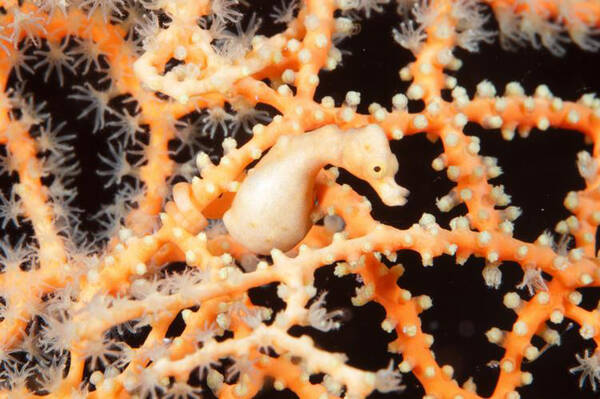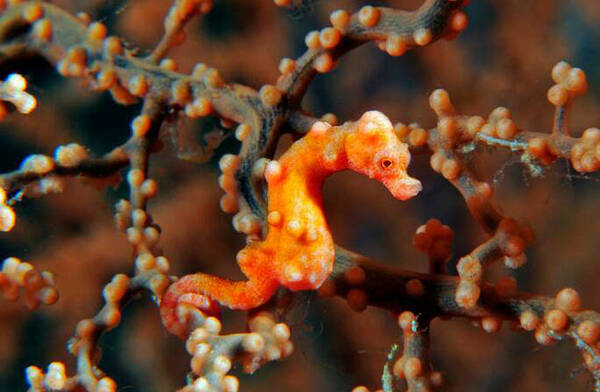Denise's Pygmy Seahorse, also known as Denise's Pygmy Seahorse in English, is a fish of the Syngnathidae family and the genus Hippocampus.

The Dennis pygmy seahorse was discovered in Indonesia by Sara Lourie, a graduate student at McGill University in Montreal, Canada, and co-authored with Dr. John Randall of the Bishop Museum in Hawaii, published in the journal Zoological Studies. The discovery was the result of a collaborative effort between divers, underwater photographers and naturalists. In the past, Denise's Pygmy Seahorse was often mistaken for the offspring of other seahorses until it was photographed by underwater photographer Denise Tacket in 1997. Sara Lourie also named it after her name "Denise".
Denise's Pygmy Seahorse generally lives on gorgonians at depths of 10-100 meters. When young Denise's Pygmy Seahorse settle on gorgonians, they will not move between host gorgonians, but will stay in a very small range of activities.
Dioecious, oviparous. The male will perform courtship rituals before the female transfers the eggs to his brood pouch. During reproduction, the female will lay eggs in the male's brood pouch (the eggs enter the brood pouch through a slit behind the anus), and the eggs will fully hatch in the brood pouch. The gestation period is about 11 days. After giving birth, the male's skin is visibly wrinkled, but soon after, it seems to flatten out again, probably due to the seawater. Males can give birth to 6-16 pups at a time.

The global population size of Dennis's pygmy seahorse has not yet been estimated. The only population survey was conducted in southeastern Sulawesi, Indonesia, where the density of Denis's pygmy seahorse was 0.0059 (±0.001) individuals/m2 (Smith, 2010). Further research is needed to determine trends in population abundance and abundance of Denis's pygmy seahorse.
Denis's pygmy seahorse is threatened by anthropogenic destruction and degradation of its coral reef habitat, including destructive fishing (e.g., using explosives and cyanide) and environmental pollution from land reclamation (Smith, 2010; Lim et al., 2011). Rising global temperatures and ocean acidification also pose some threats to it (Thresher et al., 2011).
Listed in the IUCN Red List of Threatened Species (IUCN 2015 ver 3.1) - Data Deficient (DD).
Listed in the Convention on International Trade in Endangered Species of Wild Fauna and Flora (CITES) - Appendix II.
Protect wild animals and eliminate game.
Maintaining ecological balance is everyone's responsibility!